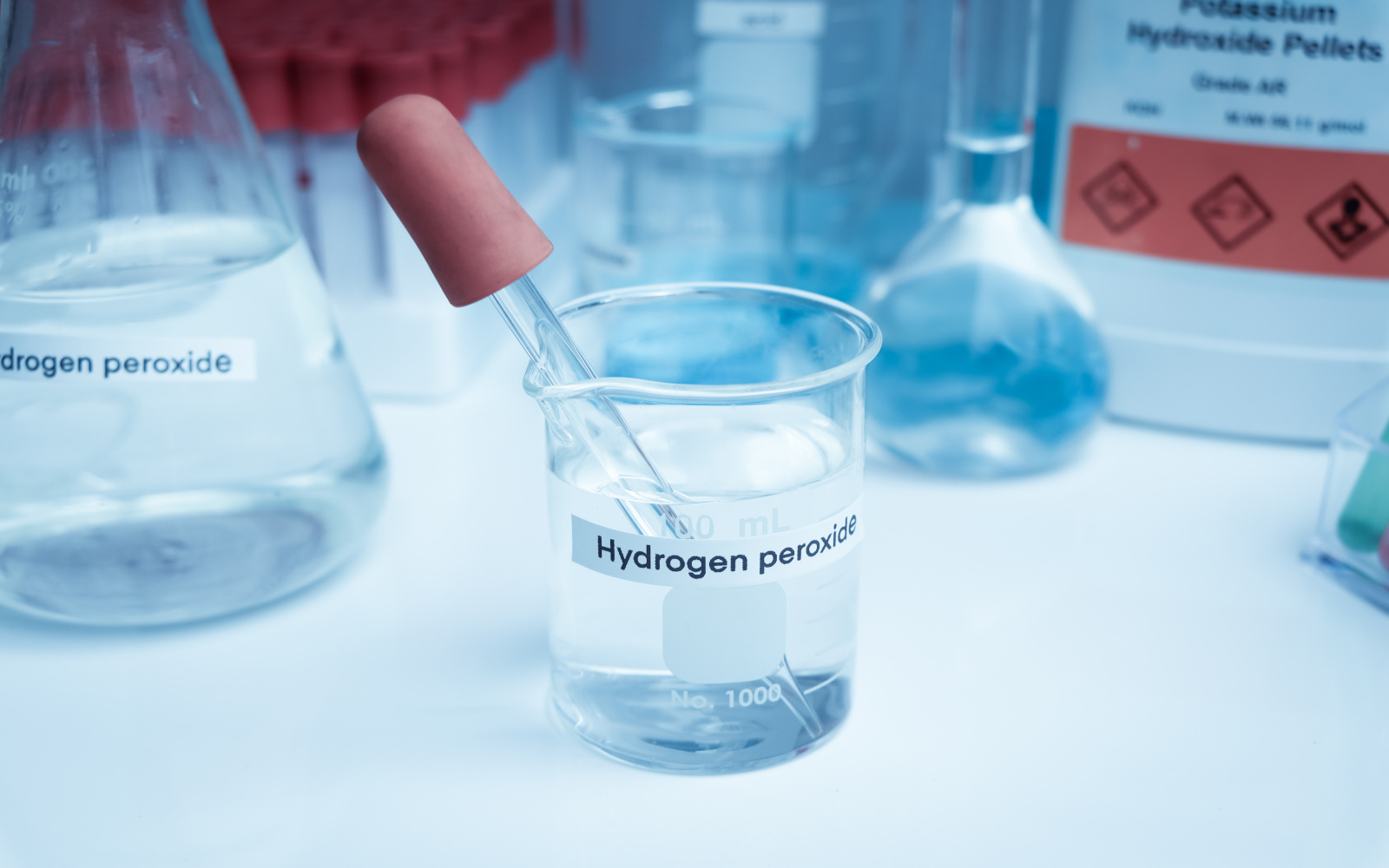Hydrogen Peroxide (H2O2) is a pale blue liquid at room temperature, widely known for its strong oxidizing properties. It is commonly used in various industrial and medical applications, including disinfection, bleaching, and chemical synthesis.
While it has many beneficial uses, H2O2 poses significant health risks, particularly in concentrated forms.
This article explores the health effects of hydrogen peroxide exposure, industries where it is commonly used, and essential safety measures to protect workers.
Health Effects of Hydrogen Peroxide Exposure
Hydrogen Peroxide is a reactive oxygen species that can cause various adverse health effects upon exposure. The severity of these effects depends on the concentration of H2O2 and the duration of exposure.
Acute Exposure
- Inhalation Risks: Inhalation of hydrogen peroxide vapors can cause irritation of the respiratory tract, leading to coughing, shortness of breath, and sore throat. In severe cases, high concentrations can result in respiratory distress and pulmonary edema, a condition characterized by fluid accumulation in the lungs.
- Dermal and Ocular Irritation: Contact with concentrated H202 can cause skin burns, redness, and blistering. Eye exposure can result in severe irritation, pain, and potential damage to the cornea, possibly leading to vision loss if not treated promptly.
- Ingestion Hazards: Swallowing hydrogen peroxide, even in dilute forms, can cause nausea, vomiting, abdominal pain, and damage to the gastrointestinal tract. Ingestion of concentrated H2O2 can lead to more severe complications, including the release of oxygen bubbles into the bloodstream, which can be life-threatening.
Chronic Exposure
- Chronic Respiratory Issues: Repeated exposure to H202 vapors may lead to chronic respiratory conditions, including bronchitis and exacerbation of asthma symptoms.
- Skin Sensitization: Prolonged skin contact with H2O2 can lead to sensitization, resulting in allergic reactions upon subsequent exposures.
Industries and Applications
Hydrogen Peroxide is utilized in a variety of industries due to its versatility. Key applications include:
- Chemical Manufacturing: H2O2 is used as a bleaching agent in the production of paper and textiles, as well as in the synthesis of organic and inorganic chemicals.
- Medical and Pharmaceutical: It serves as a disinfectant in healthcare settings, particularly for sterilizing medical equipment and surfaces.
- Water Treatment: Hydrogen peroxide is used in water and wastewater treatment processes to remove contaminants and improve water quality.
Safety Considerations and Best Practices
Due to the reactive and potentially hazardous nature of hydrogen peroxide, strict safety measures are necessary to prevent exposure and ensure a safe working environment.
Monitoring and Detection
- Gas Detection Systems: In environments where H202 vaporization is possible, gas detectors, such as the Accusafe or GasD 8000 by Interscan, should be used to monitor H2O2 levels. Regular calibration and maintenance of these detectors are crucial for accuracy.
- Ventilation: Adequate ventilation systems, including local exhaust ventilation, are essential to disperse hydrogen peroxide vapors and maintain safe air quality.
Personal Protective Equipment (PPE)
- Respiratory Protection: Appropriate respiratory protective equipment, such as air-purifying respirators with appropriate filters, should be worn in areas where H2O2 exposure is likely.
- Skin and Eye Protection: Workers should wear chemical-resistant gloves, protective clothing, and safety goggles or face shields to prevent skin and eye contact with hydrogen peroxide.
Emergency Response and Training
- Emergency Protocols: Comprehensive emergency response plans should include procedures for dealing with spills, exposure incidents, and first aid. Safety showers and eyewash stations should be readily available in areas where H2O2 is handled.
- Training and Education: Regular training for employees on the hazards of hydrogen peroxide, proper use of PPE, and emergency response measures is essential. Workers should also be trained on the safe handling and storage of H2O2.
Lesser-Known Insights and Considerations
- Stability and Decomposition: H202 can decompose into water and oxygen, potentially causing pressure buildup in sealed containers. Proper storage conditions and handling practices are necessary to prevent accidents.
- Environmental Considerations: H2O2 can decompose into environmentally benign byproducts; however, its strong oxidizing nature can impact ecosystems if released in large quantities. Proper disposal and spill management are crucial to minimize environmental impact.
Hydrogen Peroxide is a valuable chemical with diverse applications, but its potential health hazards require diligent safety practices.
Understanding the health effects of H2O2 exposure, implementing effective monitoring systems, and following best practices for safety can significantly reduce the risks associated with this compound.
For more information on hydrogen peroxide gas detection systems and to request a quote for the Accusafe or GasD 8000 by Interscan, contact us today. Ensure the safety of your workforce with reliable gas detection solutions tailored to your industry’s needs.


